
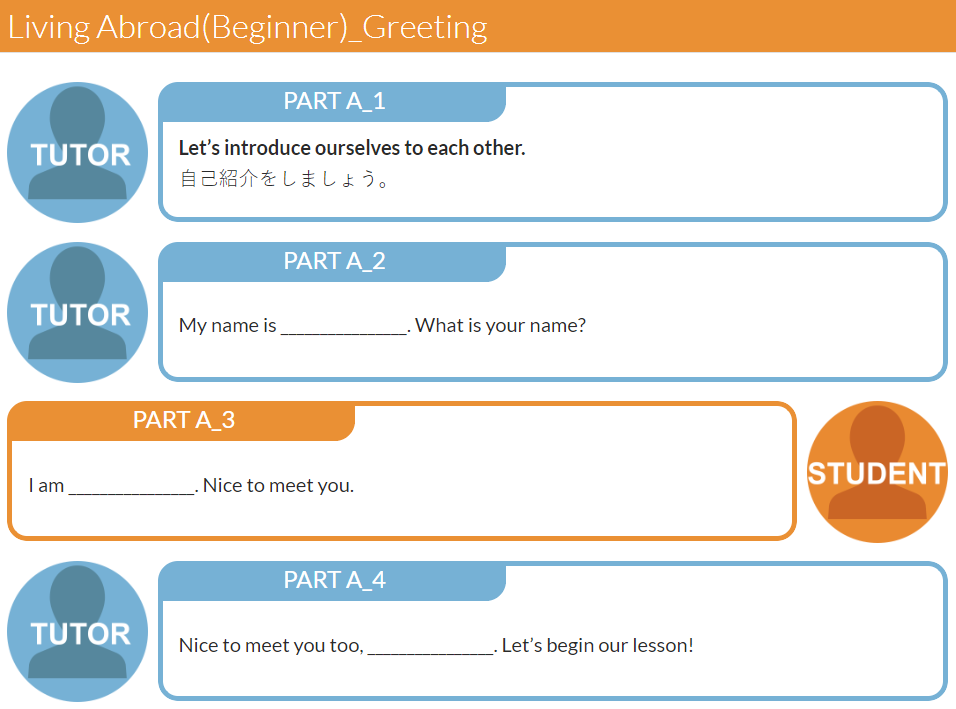
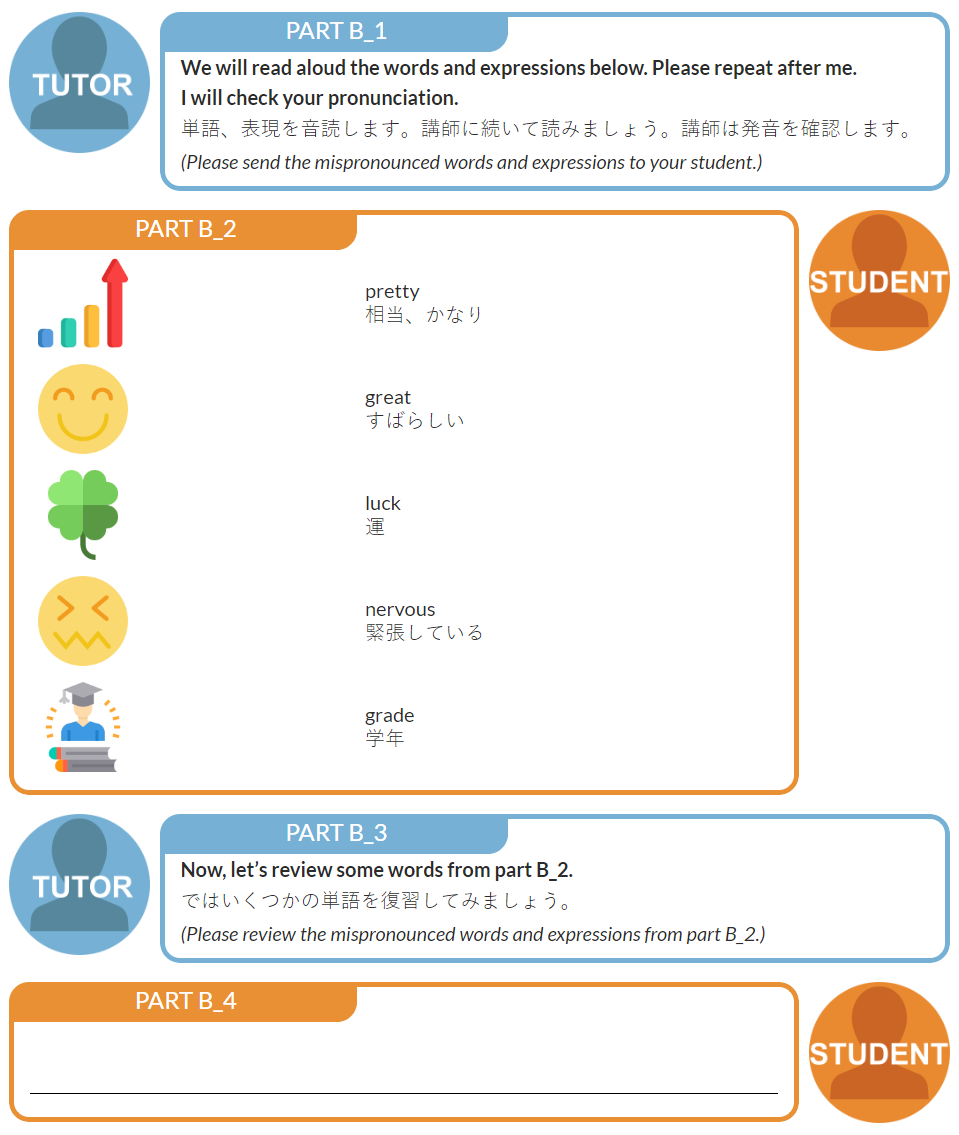
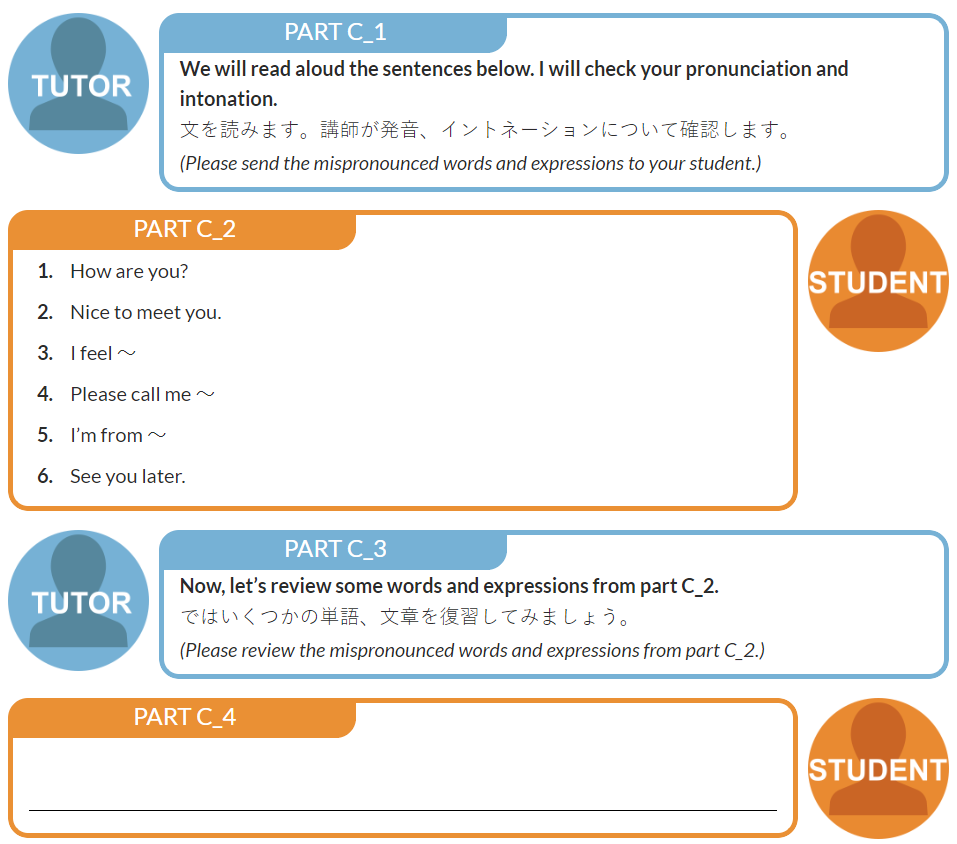
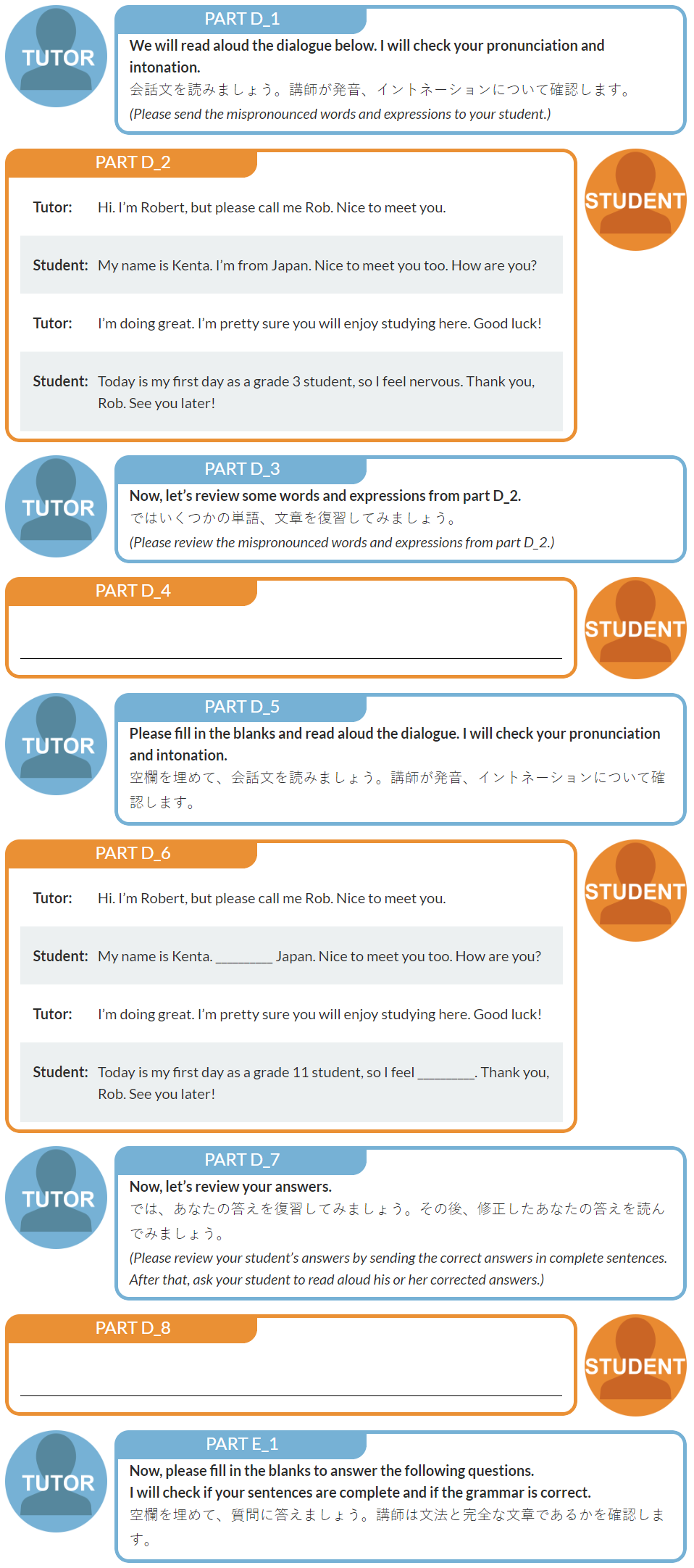


All posts by weblio PH
TOEFL Task4 実践問題 2
PART A_1
Let’s introduce ourselves to each other.
自己紹介をしましょう。
PART A_2
My name is ________________. What is your name?
PART A_3
I am ________________. Nice to meet you.
PART A_4
Nice to meet you too, ________________. Let’s begin our lesson!
PART B_1
Please read aloud the following passage in 45 seconds.
以下の文章を音読します。45秒で読みましょう。
PART B_2
The reason why people feel awful when they are sick is not because of the viruses that go into their bodies. Cytokines are the ones responsible for this. Cytokines are produced by the first line of defense by the immune system. When the immune system is under serious attack, it releases more cytokines that trigger two responses. The first one is the vagus nerve which runs throughout the body into the brain that sends information and passes near an important area of pain processing. Second, cytokines travel throughout the body to the hypothalamus which is responsible for controlling temperature, thirst, hunger, and sleep.
PART C_1
I will read aloud the lecture part for 90 seconds. Please take down notes while I am reading. After that, please read aloud the lecture part.
講師が講義の一部を90秒で音読します。講師が読んでいる間にメモを取りましょう。その後、音読してください。
PART C_2
Have you ever wondered why you feel awful when you are sick? Most people often think that the reason behind it is the viruses that go into their bodies. But do you know that it is not the real reason? In fact, the body is the one responsible for this. People get sick when a flu virus gets into their system which infects and kills their cells. This alerts the immune system about your condition. Then, the body generates its defense mechanisms. The first line of defense is responsible for searching and destroying viruses and infected cells. Afterwards, they will release cytokines that recruit more virus-busting cells. To avoid the virus from spreading more, the immune system launches a stronger defense. However, when the immune system is under serious attack, it produces more cytokines which trigger two responses. The first one is the vagus nerve which runs throughout the body into the brain. It sends information to the brain that passes near an important area of pain processing. Second, cytokines travel throughout the body to the hypothalamus. It is the one responsible for controlling temperature, thirst, hunger, and sleep. It also sends signals that tell muscles to contract and causes a rise in body temperature. It also makes people sleepy and feel thirsty and lose their appetite.
PART D_1
I will ask the following questions. Please answer based on the announcement and the dialogue.
You have 30 seconds for preparation and 60 seconds for answering. Please start your preparation silently.
You have 30 seconds for preparation and 60 seconds for answering. Please start your preparation silently.
講師が以下の質問をします。読んだ内容をもとに答えましょう。準備時間は30秒、回答時間は60秒です。静かに解答の準備を始めてください。
PART D_2
| Using the examples from the lecture, explain why people feel awful when they get sick. | |
| Answer: | |
PART D_3
Now, let’s review your answer. After that, please read aloud your corrected answer.
ではあなたの答えを復習してみましょう。その後、修正したあなたの答えを読んでみましょう。
(Please review your student’s answers by sending the correct sentences. After that, ask your student to read aloud his or her corrected answers.)
PART D_4
PART D_5
Now, we’ll read the sample answer. Please repeat after me.
では、講師のあとに続いて、模範解答を読んでみましょう。
PART D_6
The professor was talking about the real reason why people feel awful when they are sick, the topic mentioned in the passage. According to the reading passage, people do not feel awful when they are sick because of the viruses that go into their bodies. Rather, it is caused by cytokines that are produced by the first line of defense of their immune system. The professor mentioned the two responses that trigger cytokines when the immune system is under serious attack. The first one is the vagus nerve that runs throughout the body into the brain. The professor mentioned that the vagus nerve sends information to the brain that passes near an important area of pain processing. The second trigger is when cytokines travel throughout the body to the hypothalamus. The professor mentioned that the hypothalamus is responsible for controlling temperature, thirst, hunger, and sleep.
PART E_1
Please read aloud the following passage in 45 seconds.
以下の文章を音読します。45秒で読みましょう。
PART E_2
The lower esophageal sphincter is one of the most important muscles in our body that can be found between the chest and the abdomen. It plays a crucial role to help people eat. However, when it malfunctions, it causes heartburn. Two of the main causes of this are the diet and the consumption of nicotine and alcohol. Foods like caffeine and peppermint contain ingredients that relax the LES which makes it incapable of doing its job. Meanwhile, smoking increases the risk of heartburn because of the nicotine found in cigarettes. Moreover, carbonated beverages can cause the stomach to bubble up, potentially forcing the LES to open.
PART F_1
I will read aloud the lecture part for 90 seconds. Please take down notes while I am reading. After that, please read aloud the lecture part.
講師が講義の一部を90秒で音読します。講師が読んでいる間にメモを取りましょう。その後、音読してください。
PART F_2
Do you know that one of the most important muscles in our body is found between the chest and the abdomen? It is called the lower esophageal sphincter also known as LES. It plays a crucial role to help us eat. However, when it malfunctions, it causes heartburn which many people have been experiencing for thousands of years now. Heartburn is a condition where people feel like there is a flame in their heart down to their esophagus or sometimes a sour-tasting chest-spasm. But what are the reasons why many people suffer from heartburn? Let us talk about the two of the main reasons for this which are their diet and consumption of nicotine and alcohol. Let us first talk about the diet. Foods like caffeine and peppermint contain ingredients that relax the LES which makes it incapable of doing its job. Moreover, other acidic foods such as citrus and tomatoes can worsen irritation of the esophagus when it releases stomach acid. Second, smoking increases the risk of heartburn because of the nicotine that can be found in cigarettes. The nicotine relaxes the LES. In addition to that, carbonated beverages can bubble up the stomach which may force to open the valve.
PART G_1
I will ask the following questions. Please answer based on the announcement and the dialogue.
You have 30 seconds for preparation and 60 seconds for answering. Please start your preparation silently.
You have 30 seconds for preparation and 60 seconds for answering. Please start your preparation silently.
講師が以下の質問をします。読んだ内容をもとに答えましょう。
準備時間は30秒、回答時間は60秒です。静かに解答の準備を始めてください。
準備時間は30秒、回答時間は60秒です。静かに解答の準備を始めてください。
PART G_2
| Using the examples in the lecture, please explain the main causes of heartburn. | |
| Answer: | |
PART G_3
Now, let’s review your answer. After that, please read aloud your corrected answer.
ではあなたの答えを復習してみましょう。その後、修正したあなたの答えを読んでみましょう。
(Please review your student’s answers by sending the correct sentences. After that, ask your student to read aloud his or her corrected answers.)
PART G_4
PART G_5
Now, we’ll read the sample answer. Please repeat after me.
では、講師のあとに続いて、模範解答を読んでみましょう。
PART G_6
The professor was talking about the lower esophageal sphincter also known as the LES, an important muscle that can be found between the chest and the abdomen, the topic mentioned in the passage. According to the reading passage, when the LES malfunctions, it causes heartburn which many people have been experiencing for thousands of years now. It is a condition where people feel like there is a flame in their heart down to their esophagus or sometimes a sour-tasting chest-spasm. The professor mentioned two of the main causes of this; diet and consumption of nicotine and alcohol. The first cause mentioned in the passage is the diet. The professor mentioned that foods like caffeine and peppermint contain ingredients that relax the LES which makes it incapable of doing its job. Moreover, other acidic foods such as citrus and tomatoes can worsen irritation of the esophagus when it releases stomach acid. The second cause of heartburn is the consumption of nicotine and alcohol. The professor mentioned that smoking increases the risk of heartburn because of the nicotine that can be found in cigarettes. The nicotine relaxes the LES. In addition to that, carbonated beverages can bubble up the stomach which may force to open the valve.
PART H_1
Now, let’s do a free talk about the following topics.
以下のトピックについてフリートークをしましょう。
(Please do a free talk if you have time left.)
PART H_2
Please explain why having a healthy diet is important.
Give 2 reasons and examples to support your opinion.
Give 2 reasons and examples to support your opinion.
PART H_3
Y_CII_Lesson-10-2
PART A_1
We will read aloud the words below. Please repeat after me. I will check your pronunciation.
単語を音読します。講師に続いて読みましょう。講師は発音を確認します。
(Please send the mispronounced words and expressions to your student.)
PART A_2
| fail | 失敗する |
| fame | 名声 |
| power | 権力 |
| courage | 勇気 |
| survive | 生き延びる |
| encouragement | 奨励 |
PART A_3
Now, let’s review some words from part A_2.
ではいくつかの単語を復習してみましょう。
(Please review the mispronounced words and expressions from part A_2.)
PART A_4
PART A_5
Now, please look at the picture below. Give three actions that you see in the picture.
以下の写真を見てください。3人の人物が何をしているか描写してみましょう。

PART A_6
| 1. | |
| 2. | |
| 3. |
PART A_7
Now, let’s review your answers.
では、あなたの答えを復習してみましょう。その後、修正したあなたの答えを読んでみましょう。
(Please review your student’s answers by sending the correct answers in complete sentences. After that, ask your student to read aloud his or her corrected answers.)
PART A_8
PART B_1
You will read aloud the passage below. I will check your pronunciation and intonation.
文章を読みます。講師が発音、イントネーションについて確認します。
(Please send the mispronounced words and expressions to your student.)
PART B_2
Sense of humor
“Peanuts” was a popular cartoon made by Charles M. Schulz. In one of its stories, the home team has won a football game which made Linus very happy. Meanwhile, Charlie Brown listens to him quietly and asks him about how the other team might feel. Charlie understands how it feels to fail because he himself has experienced it. He had never become a good student or good at sports. Basically, in a world where power and wealth matter the most, he is a failure. But the truth is, he never loses because he never feels sorry for himself. Instead, he hopes for better days and keeps trying. And that makes him the real winner.
Schulz seems to tell people through “Peanuts” that real success is not about having money, fame, and power. Rather, it is about having hope, courage, respect for others, and a sense of humor. He drew “Peanuts” for nearly 50 years. However, in 1999, he found out that he had cancer and could no longer continue. He wanted to say goodbye to his readers, so he drew a farewell cartoon. Unfortunately, he was not able to see it because he died the day before it came out. Schulz and “Peanuts” have helped people survive in this difficult world with a smile on their faces. It has also served as an encouragement to many people.
PART B_3
Now, let’s review some words and sentences from part B_2.
ではいくつかの単語、文章を復習してみましょう。
(Please review the mispronounced words and sentences from part B_2.)
PART B_4
PART B_5
I will ask the following questions. Please answer based on the passage. I will check if your sentences are complete and if the grammar is correct.
講師が以下の質問をします。読んだ内容をもとに答えましょう。講師は文法と完全な文章で答えられているかを確認します。
PART B_6
| 1. | What is “Peanuts?” |
| Answer: | |
| 2. | What does Charlie understand? |
| Answer: | |
| 3. | What does Schulz seem to tell people? |
| Answer: | |
| 4. | How long did he draw “Peanuts?” |
| Answer: | |
PART B_7
Now, let’s review your answers.
では、あなたの答えを復習してみましょう。その後、修正したあなたの答えを読んでみましょう。
(Please review your student’s answers by sending the correct answers in complete sentences. After that, ask your student to read aloud his or her corrected answers.)
PART B_8
PART C_1
Please choose a word to complete each sentence. Then, read aloud the sentences.
言葉を選んで文章を完成させましょう。そのあと音読しましょう。
PART C_2
survive
power
fame
fail
| 1. | The students __________ to submit their projects on time. |
| 2. | Do not let _______ go to your head. |
| 3. | The king and queen abuse their _________. |
PART C_3
Now, let’s review your answers.
では、あなたの答えを復習してみましょう。その後、修正したあなたの答えを読んでみましょう。
(Please review your student’s answers by sending the correct answers in complete sentences. After that, ask your student to read aloud his or her corrected answers.)
PART C_4
PART D_1
Please answer the following questions. I will check if your sentences are complete and if the grammar is correct.
講師が質問しますので答えましょう。講師は文法と完全な文章であるかを確認します。
PART D_2
| 1. | Do you like watching cartoons? |
| Answer: | |
| 2. | Who is your favorite cartoon character? |
| Answer: | |
| 3. | Who is the most popular cartoon character in your country? |
| Answer: | |
| 4. | What do you feel when you watch cartoons? |
| Answer: | |
| 5. | Have you ever watched “Peanuts?” |
| Answer: | |
PART D_3
Now, let’s review your answers.
では、あなたの答えを復習してみましょう。その後、修正したあなたの答えを読んでみましょう。
(Please review your student’s answers by sending the correct answers in complete sentences. After that, ask your student to read aloud his or her corrected answers.)
PART D_4
SokaHS_Grade3_No4
PART A_1
Let’s introduce ourselves to each other.
自己紹介をしましょう。
PART A_2
My name is ________. Nice to meet you. What is your name?
PART A_3
I am ________. Nice to meet you too. Let’s start our lesson.
PART B_1
Now, you will give a presentation about what you have been researching.
Then, I will give feedback and ask questions after your presentation.
Then, I will give feedback and ask questions after your presentation.
次にあなたが行っている調査について講師に説明をします。そのあと講師がフィードバックと内容に関する質問をします。
PART B_2
(Please start your presentation now.)
プレゼンテーションを始めてください。
PART C_1
Thank you for your presentation. Now, I will ask you some questions about your presentation.
(Please ask some questions about the student’s presentation.)
| 1. | ? | |
| 2. | ? | |
| 3. | ? |
PART D_1
I will give a presentation.
次に講師がプレゼンテーションをします。
(Please read aloud the passage below.)
PART D_2
A few years ago, I found out that some of my classmates in elementary school did not finish their education, while others were not even able to experience going to college due to personal reasons. That made me think of how many children in the Philippines are not privileged enough to go to school to get a proper education. Then, I came across the Sustainable Development Program also known as SDG which education is one of their 17 goals.
As I have read different researches and government websites, I learned that there are about 265 million children worldwide who are currently out of school. Meanwhile, in the Philippines, nine percent of Filipinos aged 6 to 24 years old are not attending a formal school or have not finished college education. One of the most common reasons for this is the high cost of education in the Philippines. Although there are public schools in the Philippines, the everyday needs of students such as allowance, food, projects, and the likes still burden most parents.
Having a proper and quality education is one of the fundamental needs to succeed in life. It opens various doors of opportunity to make people’s life more comfortable. But the current education system in most developing countries hinders the chance of most children in attaining this. To solve this problem, the government must provide scholarships to students, trainings and workshops to teachers, and build and improve school facilities that would cater to students’ needs. In addition to that, they should make schools more accessible to students most especially to those who live in rural areas. I know that there are more things we need to know about the situation of the Philippines’ education system to help these children go to school, but I believe that if we work together, it would not be impossible to achieve all of these.
PART E_1
Now, please ask me some questions about my presentation.
講師のプレゼンテーションについて、以下の質問をしてみましょう。
PART E_2
| 1. | Why are you interested in this topic? |
| 2. | Did you go somewhere to research about your topic? |
| If yes, where did you go? | |
| If no, what did you do instead? | |
| 3. | How are you going to do more research about your topic? |
| 4. | How much time do you think it is going to take to solve the problem? Why do you think so? |
PART F_1
Now, let’s do a free talk about the following topics.
以下のトピックについてフリートークをしましょう。
(Please do a free talk if you have time left.)
PART F_2
How important is education for you?
How do you think you can help out-of-school youth?
PART F_3
B_HS1α_review7
PART A_1
Let’s introduce ourselves to each other.
PART A_2
My name is ________________. What is your name?
PART A_3
I am ________________. Nice to meet you.
PART A_4
Nice to meet you too, ________________. What is your favorite day of the week?
PART A_5
PART A_6
I see. Now, let’s begin our lesson!
PART B_1
We will read aloud the words and expressions below. Please repeat after me.
I will check your pronunciation.
I will check your pronunciation.
(Please send the mispronounced words and expressions to your student.)
PART B_2
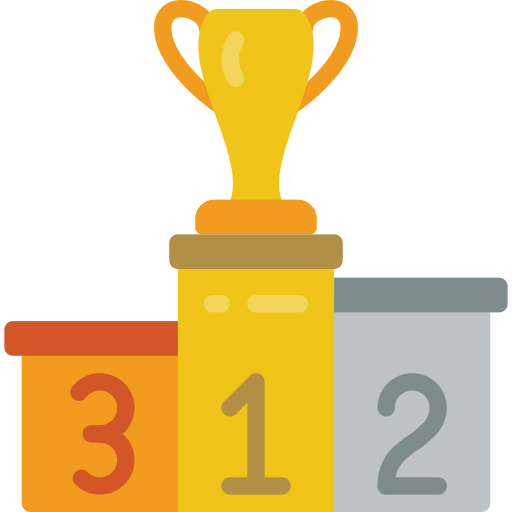
|
competition
試合、コンテスト
|
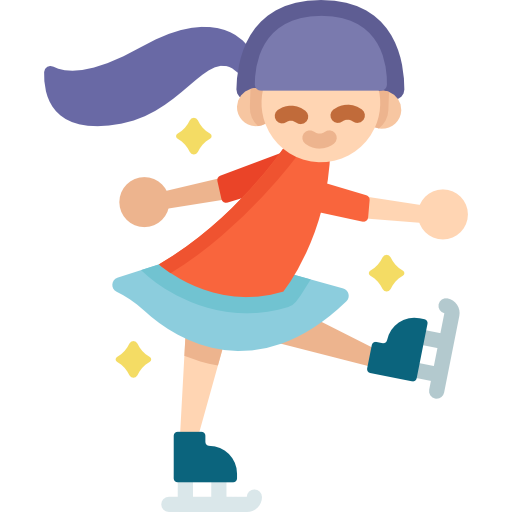
|
figure skating
フィギュアスケート
|
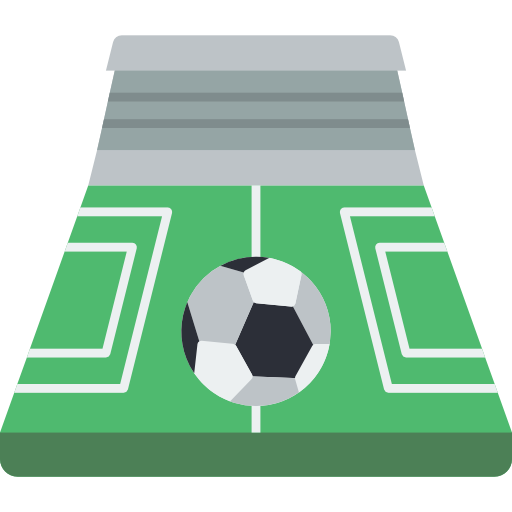
|
field
競技場、グラウンド
|

|
team
チーム
|

|
athlete
スポーツマン、運動選手
|
PART B_3
Now, let’s review some words from part B_2.
(Please review the mispronounced words and expressions from part B_2.)
PART B_4
PART C_1
We will read aloud the sentences below. I will check your pronunciation and intonation.
(Please send the mispronounced words and expressions to your student.)
PART C_2
| 1. | My favorite sport in the Olympics is baseball. |
| 2. | I started playing baseball when I was 10 years old. |
| 3. | Why do you like figure skating? |
| 4. | My favorite movement in figure skating is called the axel which requires me to jump into the air and turn my body twice. |
| 5. | Why do you like basketball? |
| 6. | The most popular sport in my country is soccer. |
| 7. | Soccer is played by two teams in a field. |
| 8. | How long do athletes usually practice for a swimming competition? |
PART C_3
Now, let’s review some words and expressions from part C_2.
(Please review the mispronounced words and expressions from part C_2.)
PART C_4
PART D_1
Let’s do a role play with the given situations. You should mention the items below during the conversation.
PART D_2
| Situation 1: |
You are talking with your classmate. Please tell him/her about your favorite sport in the Olympics.
(Your tutor will pretend to be your classmate.)
|
| Items: |
– favorite sport in the Olympics – reason why it is your favorite sport – whether you play it or not |
PART D_3
| Situation 2: |
You are going to interview a figure skater in the Olympic games. Please ask him/her more about figure skating.
(Your tutor will pretend to be the figure skater.)
|
| Items: |
– reason why he/she likes that sport – his/her favorite movements in figure skating – how the sport affects his/her body |
PART D_4
| Situation 3: |
You are with your friend who plays basketball. Please ask him/her about it.
(Your tutor will pretend to be your friend.)
|
| Items: |
– age he/she started playing basketball – reason why he/she likes basketball – how many times he/she practices basketball in a week |
PART D_5
| Situation 4: |
Your host brother/sister is asking you about popular sports in your country. Please tell him/her more about it.
(Your tutor will pretend to be your host brother/sister.)
|
| Items: |
– name some popular sports in your country – reason why it is popular – whether you have ever been to watch that sport or not |
PART D_6
| Situation 5: |
You are with your uncle/aunt who is an athlete. He/she usually joins swimming competitions. Please ask him/her questions as he/she shows you around the area for the swimming practice.
(Your tutor will pretend to be your uncle/aunt.)
|
| Items: |

|
PART D_7
Now, let’s review your answers.
(Please review your student’s answers by sending the correct answers in complete sentences. After that, ask your student to read aloud his or her corrected answers.)
PART D_8
PART E_1
Let’s do a free talk.
(Please do a free talk if you have time left.)
PART E_2
Tell me about the sport you play at school.
PART E_3
B_HS1α_practice7
PART A_1
Let’s introduce ourselves to each other.
PART A_2
My name is ________________. What is your name?
PART A_3
I am ________________. Nice to meet you.
PART A_4
Nice to meet you too, ________________. How old are you?
PART A_5
PART A_6
I see. Now, let’s begin our lesson.
PART B_1
We will read aloud the words below. Please repeat after me. I will check your pronunciation.
(Please send the mispronounced words and expressions to your student.)
PART B_2

| Olympics | オリンピック |
| take place | 行なわれる、催される |
| race | 競争、レース |
| movement | 動き |
| lift | 持ち上げる |
PART B_3
Now, let’s review some words from part B_2.
(Please review the mispronounced words and expressions from part B_2.)
PART B_4
PART B_5
Please look at the picture in part B_2. Give a maximum of three things that you see in the picture.
(If your student is having a hard time to answer, please move to the next activity.)
PART B_6
PART B_7
Please construct sentences using each word below.
PART B_8
| Olympics | |
| take place | |
| race | |
| movement | |
| lift |
PART C_1
Now, we will read aloud the words below to practice proper phonics. I will check your pronunciation.
(Please send the mispronounced words and expressions to your student.)
PART C_2
| years apart | /jɪrz əˈpɑrt/ |
| each other | /iʧ ˈʌðər/ |
| race in water | /reɪs ɪn ˈwɔtər/ |
| held in | /hɛld ɪn/ |
| figure skating | /fɪgjər ˈskeɪtɪŋ/ |
PART C_3
Now, let’s review some words from part C_2.
(Please review the mispronounced words and expressions from part C_2.)
PART C_4
PART D_1
You will read aloud the passage below. I will check your pronunciation and intonation.
(Please send the mispronounced words and expressions to your student.)
PART D_2
The Olympic Games are international sports event that take place every four years. There are two kinds of Olympic sports; the Summer and Winter which alternates each other that happens two years apart.
One of the most popular summer sports is swimming. It is a sport where athletes race in water at a designated distance. The swimmer who finishes the race in the fastest time wins the game. Backstroke and breaststroke are some of the most popular swimming strokes.
On the other hand, figure skating is one of the most popular winter sports. It is a sport that could be by pair or individual. In this sport, ice skaters perform freestyle movements in a graceful way such as jumps, toe loop, flips, and lifts.
The last Winter Olympics was held in Pyeongchang, South Korea in the year 2018. Meanwhile, the upcoming 2020 Summer Olympics will be held in Tokyo, Japan.
PART D_3
Now, let’s review some words and sentences from part D_2.
(Please review the mispronounced words and sentences from part D_2.)
PART D_4
PART D_5
I will ask the following questions. Please answer based on the passage. I will check if your sentences are complete and if the grammar is correct.
PART D_6
|
1.
|
What are the Olympic Games? |
|
Answer:
|
|
|
2.
|
What are the two kinds of Olympic Sports? |
|
Answer:
|
|
|
3.
|
Where was the last Winter Olympics held? |
|
Answer:
|
PART D_7
Now, let’s review your answers.
(Please review your student’s answers by sending the correct answers in complete sentences. After that, ask your student to read aloud his or her corrected answers.)
PART D_8
PART E_1
Please choose a word to complete each sentence. Then, read aloud the sentences.
PART E_2
race
movement
take place
lift
|
1.
|
The school festival will _______________ next week. |
|
2.
|
Dave won the _____. |
|
3.
|
I watched Chelo do her favorite gymnastic __________. |
|
4.
|
Steven likes to ______ weights. |
PART E_3
Now, let’s review your answers.
(Please review your student’s answers by sending the correct answers in complete sentences. After that, ask your student to read aloud his or her corrected answers.)
PART E_4
PART F_1
Please answer the following question.
I will check if your sentences are complete and if the grammar is correct.
I will check if your sentences are complete and if the grammar is correct.
PART F_2
|
1.
|
Should all people play sports? | |
|
Answer:
|
I hold the view that | |
|
2.
|
Are competitive sports not good for children? | |
|
Answer:
|
It is my impression that | |
|
3.
|
Should playing volleyball be limited to girls? | |
|
Answer:
|
In my understanding |
PART F_3
Now, let’s review your answer.
(Please review your student’s answers by sending the correct answers in complete sentences. After that, ask your student to read aloud his or her corrected answers.)
PART F_4
PART G_1
Now, let’s answer the following questions. Your answer should start with “Yes/No”.
Give at least one reason to support your opinion. I will check if your sentences are complete and if the grammar is correct.
Give at least one reason to support your opinion. I will check if your sentences are complete and if the grammar is correct.
PART G_2
|
1.
|
Do you think soccer is the most famous sport in the world? |
|
Answer:
|
|
|
2.
|
Do you agree that children should play sports as young as possible? |
|
Answer:
|
PART G_3
Now, let’s review your answers.
(Please review your student’s answers by sending the correct answers in complete sentences. After that, ask your student to read aloud his or her corrected answers.)
PART G_4
PART H_1
Let’s do a free talk about the following topic.
(Please do a free talk if you have time left.)
PART H_2
What sport do you play?
PART H_3
Y_CI_Lesson-10-2
PART A_1
We will read aloud the words below. Please repeat after me. I will check your pronunciation.
単語を音読します。講師に続いて読みましょう。講師は発音を確認します。
(Please send the mispronounced words and expressions to your student.)
PART A_2
| rare | 希少な |
| invention | 発明 |
| technology |
技術
|
| remind | 思い起こさせる |
| electronic | 電気の |
| prove | 証明する |
PART A_3
Now, let’s review some words from part A_2.
ではいくつかの単語を復習してみましょう。
(Please review the mispronounced words and expressions from part A_2.)
PART A_4
PART A_5
Now, please look at the picture below. Give three actions that you see in the picture.
以下の写真を見てください。3人の人物が何をしているか描写してみましょう。

PART A_6
| 1. | |
| 2. | |
| 3. |
PART A_7
Now, let’s review your answers.
では、あなたの答えを復習してみましょう。その後、修正したあなたの答えを読んでみましょう。
(Please review your student’s answers by sending the correct answers in complete sentences. After that, ask your student to read aloud his or her corrected answers.)
PART A_8
PART B_1
You will read aloud the passage below. I will check your pronunciation and intonation.
文章を読みます。講師が発音、イントネーションについて確認します。
(Please send the mispronounced words and expressions to your student.)
PART B_2
Letters to grandchildren
Teddy moved back to India with his father after the war ended in 1918. Meanwhile, Kaka stayed in England. During those days, many families were away from each other. So, they wrote letters to their families to stay connected. However, mails took many weeks to arrive.
Kaka sent letters to his grandchildren. When they turned five, he started to include longer sentences in his letters to help them learn to read. In his letters, he drew rare animals in India and about the inventions and technology such as the radio and the telephone. He continued sending his grandchildren letters for many years.
Kaka’s letters to his grandchildren remind people that time and distance are nothing if they make extra effort to show their loved ones that they care to keep in touch. In this day and age, it is easy for people to keep in touch and they sometimes take it for granted. But these electronic messages would not remain as treasures. This proves that handwritten letters have magic that could last for thousands of years.
PART B_3
Now, let’s review some words and sentences from part B_2.
ではいくつかの単語、文章を復習してみましょう。
(Please review the mispronounced words and sentences from part B_2.)
PART B_4
PART B_5
I will ask the following questions. Please answer based on the passage. I will check if your sentences are complete and if the grammar is correct.
講師が以下の質問をします。読んだ内容をもとに答えましょう。講師は文法と完全な文章で答えられているかを確認します。
PART B_6
| 1. | Who moved back to India after the war ended in 1918? |
| Answer: | |
| 2. | What took many weeks to arrive? |
| Answer: | |
| 3. | Who sent letters to his grandchildren? |
| Answer: | |
| 4. | What do Kaka’s letters to his grandchildren remind people? |
| Answer: |
PART B_7
Now, let’s review your answers.
では、あなたの答えを復習してみましょう。その後、修正したあなたの答えを読んでみましょう。
(Please review your student’s answers by sending the correct answers in complete sentences. After that, ask your student to read aloud his or her corrected answers.)
PART B_8
PART C_1
Please choose a word to complete each sentence. Then, read aloud the sentences.
言葉を選んで文章を完成させましょう。そのあと音読しましょう。
PART C_2
invention
prove
technology
remind
| 1. | I think the telephone is the greatest _________ of all time. |
| 2. | __________ makes people’s life easier. |
| 3. | The teachers _________ the students about their project. |
PART C_3
Now, let’s review your answers.
では、あなたの答えを復習してみましょう。その後、修正したあなたの答えを読んでみましょう。
(Please review your student’s answers by sending the correct answers in complete sentences. After that, ask your student to read aloud his or her corrected answers.)
PART C_4
PART D_1
Please answer the following questions.
I will check if your sentences are complete and if the grammar is correct.
I will check if your sentences are complete and if the grammar is correct.
講師が質問しますので答えましょう。講師は文法と完全な文章であるかを確認します。
PART D_2
| 1. | When did you last receive a letter from your friends? | |
| Answer: | . | |
| 2. | If you would send a letter to someone, who would it be? | |
| Answer: | . | |
| 3. | Why do you think some people do not like to write letters? | |
| Answer: | . | |
| 4. | Do you like writing letters? | |
| Answer: | . | |
| 5. | Do you agree that handwritten letters are better than electronic messages? | |
| Answer: | . | |
PART D_3
Now, let’s review your answers.
では、あなたの答えを復習してみましょう。その後、修正したあなたの答えを読んでみましょう。
(Please review your student’s answers by sending the correct answers in complete sentences. After that, ask your student to read aloud his or her corrected answers.)
PART D_4
Y_NT4_Lesson-6-2_Intermediate
PART A_1
We will read aloud the words below. Please repeat after me. I will check your pronunciation.
単語を音読します。講師に続いて読みましょう。講師は発音を確認します。
(Please send the mispronounced words and expressions to your student.)
PART A_2
| value |
価値
|
| battle |
戦い
|
| effect |
効果
|
| quality |
品質
|
| consider |
~を考慮する
|
PART A_3
Now, let’s review some words from part A_2.
ではいくつかの単語を復習してみましょう。
(Please review the mispronounced words and expressions from part A_2.)
PART A_4
PART B_1
Please read aloud the passage below. I will check your pronunciation and intonation.
文章を読みます。講師が発音、イントネーションについて確認します。
(Please send the mispronounced words and expressions to your student.)
PART B_2
In the second type of network externality, the number of users a product or service has, indirectly influences its value. The common example of this is computer software. The Windows operating system is more commonly used than Mac OS. Because of that, many people prefer using the Windows operating system to Mac OS. So, the number of users continuously increases. The battle between VHS and Betamax is another perfect example of this effect. These two were the video cassette formats in the 1970s to 1980s which were introduced at the same time. Although Betamax offered better quality, many people still prefer VHS because its manufacturers worked faster to get other companies to promote it.
This type of network effect often leads to another. This is called the de facto standard which came from the Latin word meaning “in fact.” This effect is where a standard was established and dominates the market, even without the approval of any organizations or the government. Meanwhile, consumers must be aware of this standard and consider their priorities carefully. They must weigh whether they chose popularity over quality or the other way around.
PART B_3
Now, let’s review some words and sentences from part B_2.
ではいくつかの単語、文章を復習してみましょう。
(Please review the mispronounced words and sentences from part B_2.)
PART B_4
PART B_5
I will ask the following questions. Please answer based on the passage. I will check if your sentences are complete and if the grammar is correct.
講師が以下の質問をします。読んだ内容をもとに答えましょう。講師は文法と完全な文章で答えられているかを確認します。
(Please send the sentences that need grammar corrections to your student.)
PART B_6
| 1. | What indirectly influences the value of a product or service? | |
| Answer: | . | |
| 2. | What is the common example of the second type of network externality? | |
| Answer: | . | |
| 3. | Why do many people prefer VHS to Betamax? | |
| Answer: | . | |
PART B_7
Now, let’s review your answers.
では、あなたの答えを復習してみましょう。その後、修正したあなたの答えを読んでみましょう。
(Please review your student’s answers by sending the correct answers in complete sentences. After that, ask your student to read aloud his or her corrected answers.)
PART B_8
PART C_1
Please construct sentences using each word below.
以下の言葉を使って文章を作りましょう。
PART C_2
| value | Example: | Bella and Andy value their health over wealth. | |
| Answer: | . | ||
| battle | Example: | The students organized a dance battle for their school festival. | |
| Answer: | . | ||
| effect | Example: | The effect of the typhoon was too much to handle. | |
| Answer: | . | ||
PART C_3
Now, let’s review some words from part C_2.
ではいくつかの単語を復習してみましょう。
(Please review the mispronounced words and expressions from part C_2.)
PART C_4
PART D_1
I will ask the following questions. Please answer based on your opinion. I will check if your sentences are complete and if the grammar is correct.
講師が以下の質問をします。あなたの意見をもとに答えましょう。講師は文法と完全な文章で答えられているかを確認します。
(Please send the sentences that need grammar corrections to your student.)
PART D_2
| 1. | Do you think buying online is a good idea? | |
| Answer: | . | |
| 2. | Do you agree that people should read a review about the product first before buying it? | |
| Answer: | . | |
| 3. | Why do you think people like to go shopping? | |
| Answer: | . | |
| 4. | Why do you think some people prefer to shop online? | |
| Answer: | . | |
PART D_3
Now, let’s review your answers.
では、あなたの答えを復習してみましょう。その後、修正したあなたの答えを読んでみましょう。
(Please review your student’s answers by sending the correct answers in complete sentences. After that, ask your student to read aloud his or her corrected answers.)
PART D_4
Discussion_Guide Questions_2
PART A_1
Let’s introduce ourselves to each other.
PART A_2
My name is ________. Nice to meet you. What is your name?
PART A_3
I am ________. Nice to meet you too. Let’s start our lesson.
PART A_4
In this lesson, you will practice answering questions about certain topics. I will check your grammar, pronunciation, and stress.
PART B_1
Let’s talk about the things you would do if you could time travel. I will ask you the following questions. Please answer in as much detail as you can.
PART B_2
| 1. | If you could time travel, where would you like to go? |
| 2. | What is the reason why you want to time travel to that place? |
| 3. | If you could bring another person on your time travel, who would it be? |
| 4. | What is the first thing you would do there? |
| 5. | How would time travel change your present life? |
PART B_3
Now, let’s review your answers.
(Please review your student’s answers by sending the correct answers in complete sentences. After that, ask your student to read aloud his or her corrected answers.)
PART B_4
PART B_5
Now, I will ask you a question based on your answers.
(Please ask a question based on your student’s answers.)
PART B_6
| ? |
PART B_7
PART B_8
Now, let’s review your answer.
(Please review your student’s answer by sending the correct answer in a complete sentence. After that, ask your student to read aloud his or her corrected answer.)
PART B_9
PART C_1
Let’s talk about your opinions about having a part-time job as a student. I will ask you the following questions. Please answer in as much detail as you can.
PART C_2
| 1. | What kind of part-time job would you like to try? |
| 2. | What is the reason why most students want to have a part-time job? |
| 3. | As a student, what do you think are the advantages of having a part-time job? Please explain your answers with examples. |
| 4. | As a student, what do you think are the disadvantages of having a part-time job? Please explain your answers with examples. |
| 5. | How would you make use of your part-time job experience in your future career? |
PART C_3
Now, let’s review your answers.
(Please review your student’s answers by sending the correct answers in complete sentences. After that, ask your student to read aloud his or her corrected answers.)
PART C_4
PART C_5
Now, I will ask you a question based on your answers.
(Please ask a question based on your student’s answers.)
PART C_6
| ? |
PART C_7
PART C_8
Now, let’s review your answer.
(Please review your student’s answer by sending the correct answer in a complete sentence. After that, ask your student to read aloud his or her corrected answer.)
PART C_9
PART D_1
Let’s talk about learning English. I will ask you the following questions. Please answer in as much detail as you can.
PART D_2
| 1. | What is the main reason why you study English? |
| 2. | What is the most difficult part of learning English? Please explain your answers and give examples. |
| 3. | What is the most interesting part of learning English? Please explain your answers and give examples. |
| 4. | How would learning English benefit your future career? |
| 5. | Do you think learning English is important for a person to be successful in life? Why or why not? |
PART D_3
Now, let’s review your answers.
(Please review your student’s answers by sending the correct answers in complete sentences. After that, ask your student to read aloud his or her corrected answers.)
PART D_4
PART D_5
Now, I will ask you a question based on your answers.
(Please ask a question based on your student’s answers.)
PART D_6
| ? |
PART D_7
PART D_8
Now, let’s review your answer.
(Please review your student’s answer by sending the correct answer in a complete sentence. After that, ask your student to read aloud his or her corrected answer.)
PART D_9
PART E_1
Let’s talk about learning history more than science. I will ask you the following questions. Please answer in as much detail as you can.
PART E_2
| 1. | Do you think learning history is more important than learning science? Why or why not? |
| 2. | Do you agree that history is more interesting than science? Why or why not? |
| 3. | What can you learn in history that is useful in the present time? |
| 4. | What is the most interesting part of learning science? |
| 5. | Do you agree that history could be repeated in the future? Why or why not? |
PART E_3
Now, let’s review your answers.
(Please review your student’s answers by sending the correct answers in complete sentences. After that, ask your student to read aloud his or her corrected answers.)
PART E_4
PART E_5
Now, I will ask you a question based on your answers.
(Please ask a question based on your student’s answers.)
PART E_6
| ? |
PART E_7
PART E_8
Now, let’s review your answer.
(Please review your student’s answer by sending the correct answer in a complete sentence. After that, ask your student to read aloud his or her corrected answer.)
PART E_9
PART F_1
Let’s talk about online communication. I will ask you the following questions. Please answer in as much detail as you can.
PART F_2
| 1. | What is the reason why most people prefer online communication rather than face-to-face? Please explain your answer. |
| 2. | How often do you communicate online? |
| 3. | Do you think online communication is the best way to communicate with people? Why or why not? |
| 4. | How does online communication change your face-to-face communication with other people? |
| 5. | Do you agree that online communication is safer than face-to-face communication? Why or why not? |
PART F_3
Now, let’s review your answers.
(Please review your student’s answers by sending the correct answers in complete sentences. After that, ask your student to read aloud his or her corrected answers.)
PART F_4
PART F_5
Now, I will ask you a question based on your answers.
(Please ask a question based on your student’s answers.)
PART F_6
| ? |
PART F_7
PART F_8
Now, let’s review your answer.
(Please review your student’s answer by sending the correct answer in a complete sentence. After that, ask your student to read aloud his or her corrected answer.)
PART F_9
Y_NT4_Lesson-6-2_Expert
PART A_1
We will read aloud the words below. Please repeat after me. I will check your pronunciation.
単語を音読します。講師に続いて読みましょう。講師は発音を確認します。
(Please send the mispronounced words and expressions to your student.)
PART A_2
| valuable |
価値のある
|
| competition |
競技
|
| manufacturer |
生産者
|
| promote |
促進する
|
| range |
範囲
|
| eventually |
結局
|
| standard |
標準
|
| adjust |
合わせる
|
PART A_3
Now, let’s review some words from part A_2.
ではいくつかの単語を復習してみましょう。
(Please review the mispronounced words and expressions from part A_2.)
PART A_4
PART B_1
Please read aloud the passage below. I will check your pronunciation and intonation.
文章を読みます。講師が発音、イントネーションについて確認します。
(Please send the mispronounced words and expressions to your student.)
PART B_2
In the second type of network externality, the number of users decides indirectly how valuable a product or a service is. For instance, the Windows operating system has more users than Mac OS. Because of that, the number of people who use Windows as their software increases. It has also become the market leader for many years now. Another example of this is the competition between VHS and Betamax. Both are the video cassette formats from the 1970s to 1980s wherein both were introduced at the same time. Betamax offered better picture quality. However, the manufacturers of VHS were able to convince other companies to promote their products fast. Moreover, it provided a wider range of rental movies and a good quality for average consumers. As a result, more and more people prefer to use VHS which made Betamax eventually disappear.
The network effect usually leads to another effect which is a certain standard. This standard becomes widely used and often dominate the market. This effect is called the de facto standard. Products that meet the de facto standard usually end up having a larger share of the market. This made many companies adjust to the de facto standards. Meanwhile, consumers must be careful about this phenomenon. So, it is important to know their priority between the popularity and the quality of the product.
PART B_3
Now, let’s review some words and sentences from part B_2.
ではいくつかの単語、文章を復習してみましょう。
(Please review the mispronounced words and sentences from part B_2.)
PART B_4
PART B_5
I will ask the following questions. Please answer based on the passage. I will check if your sentences are complete and if the grammar is correct.
講師が以下の質問をします。読んだ内容をもとに答えましょう。講師は文法と完全な文章で答えられているかを確認します。
(Please send the sentences that need grammar corrections to your student.)
PART B_6
| 1. | What happens in the second type of network externality? | |
| Answer: | . | |
| 2. | Which operating system has more users? | |
| Answer: | . | |
| 3. | What are the video cassette formats from the 1970s to 1980s? | |
| Answer: | . | |
| 4. | What happens to products that meet the de facto standard? | |
| Answer: | . | |
| 5. | What is important for consumers to know? | |
| Answer: | . |
PART B_7
Now, let’s review your answers.
では、あなたの答えを復習してみましょう。その後、修正したあなたの答えを読んでみましょう。
(Please review your student’s answers by sending the correct answers in complete sentences. After that, ask your student to read aloud his or her corrected answers.)
PART B_8
PART C_1
Please construct sentences using each word below.
以下の言葉を使って文章を作りましょう。
PART C_2
| valuable | . | |
| competition | . | |
| promote | . | |
| standard | . | |
| adjust | . |
PART C_3
Now, let’s review some words from part C_2.
ではいくつかの単語を復習してみましょう。
(Please review the mispronounced words and expressions from part C_2.)
PART C_4
PART D_1
I will ask the following questions. Please answer based on your opinion. I will check if your sentences are complete and if the grammar is correct.
講師が以下の質問をします。あなたの意見をもとに答えましょう。講師は文法と完全な文章で答えられているかを確認します。
(Please send the sentences that need grammar corrections to your student.)
PART D_2
| 1. | Do you usually check the quality of a product before buying it? Why or why not? | |
| Answer: | . | |
| 2. | Do you agree that expensive products have better quality than the cheaper ones? | |
| Answer: | . | |
| 3. | What do you think makes a product popular? | |
| Answer: | . | |
| 4. | What should consumers check first before buying a product? | |
| Answer: | . | |
| 5. | Why do you think some people prefer a product’s popularity more than its quality? | |
| Answer: | . | |
| 6. | Why is it important to check the reviews first before buying a product? | |
| Answer: | . | |
| 7. | Why do you think some people do not like to buy expensive products? | |
| Answer: | . |
PART D_3
Now, let’s review your answers.
では、あなたの答えを復習してみましょう。その後、修正したあなたの答えを読んでみましょう。
(Please review your student’s answers by sending the correct answers in complete sentences. After that, ask your student to read aloud his or her corrected answers.)
PART D_4

